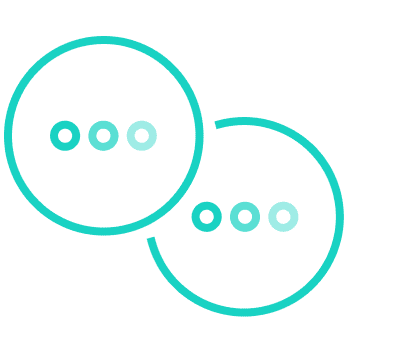Attracting the very best, and most suitable, talent to your organisation is the end goal for every business.
With equality, diversity, inclusion and belonging (EDI&B) an increasingly vital component in any process, and the influx of a variety of artificial intelligence (AI) and automation tools to assist in the recruitment process and a growing skills gap, having a fair, consistent, and standardised selection process is vital to take your business forward, and to futureproof your talent acquisition strategy.
In this article, we interview our Managing Director - Consulting and Client Engagement, Jo Lindsay, about how to use your selection process to ensure you are well prepared for the road ahead and can bring in the best talent to your organisation.

Q: How can organisations make sure they have the correct selection process in place to bring in the best talent?
A: One of the first things we have to do is have a clear understanding of our current and future strategies for the business, because that really shapes the talent that we're looking to bring into the business regarding our workforce plan. But it also shapes where we understand our talent gaps to be.
It's important to have objective criteria. We need to avoid over-stuffing our job descriptions with things that aren’t important. For example, asking for a degree where it's not necessary or a specific degree classification.
We need to ensure the process is standardised for everybody to make sure it's fair. This involves asking people, for example in interviews, the same questions, and scoring against the same set of evaluation criteria.
We need to think about the methods that we employ. Ideally, we'd have a range of methodology that we use from a selection point of view. It could be a mix of interviews, it could be skills assessments, it could be psychometrics, and really, we should be looking to make sure that different individuals assess candidates throughout the process.
For example, in an assessment centre setting, you wouldn't expect the same assessor to see the same candidate multiple times. You'd expect a range of assessors to take a view on the suitability of that particular candidate. It's important that our assessors, or indeed people involved in the recruitment process, are trained. They need to understand the selection tools that they're using, and they need to be trained in activities to help them avoid bias - for example, in the recruitment process itself.
Something that's worthy of consideration if you've got volume roles, for example, could be a validity study specifically looking at predictive validity, which basically looks at how well the candidate did in the selection test and whether a good test result means they went on to perform well in the role that they then undertook.
One of the other things I think that's important is the makeup of the assessors themselves in the process. Ensuring where we've got the agenda for equality diversity, inclusion and belonging, that we follow through on that by having a diverse panel of evaluators as well.
Finally, I think we need to think about, from a selection point of view, whether selection is actually giving the candidate the opportunity to do the best job that they can. It's not about tripping them up. Constructing interviews and selection tools that enable candidates to showcase their skills and experience is really, really important.
Q: Which one thing from the selection process can help companies be more diverse?
A: It's about ensuring, right at the very beginning, that the candidate pool is as wide as possible. Effectively, a recruitment process is a funnel. The more diverse the candidate pool that you attract in the first place, the easier it is to follow that through the process.
That can be through things like using more diverse attraction methodology. It can be about ensuring that the process itself doesn't put some candidates off. For example, certain demographics are more used to perhaps interacting through mobile devices rather than sitting at a PC. If you design an application process, does it render well on a mobile device, and – if not - how many candidates from a particular demographic might you be putting off. Things like that are really, really important.
Possibly the most important aspect, and it's very topical in terms of the HR community and the talent acquisition community exploring it, is really whether you should be recruiting for skills rather than experience. By that we're talking about people who have the skills to do the job, but maybe their credentials don't say that they've previously done that job. In this case, you're widening that opportunity out to a much larger number of people than you would be if you're setting very, very specific requirements. If you do that from a skills point of view, and it’s something we've learned practically from working with our clients, that process must follow all the way through the organisation and all the way through all people involved in the recruitment process.
We recently had an example where we'd had clients who were committed to recruiting via a skills-based approach. Then, when you got to the final interview with a line manager, having had the candidate progress through the process with the talent acquisition team, the line manager turned down the candidate because they didn't have a very specific set of experience having done that job before, in exactly the same sector as they were operating in.
So that's an example of why if you do move to a skills-based approach, you've really got to make sure it's embedded correctly within your organisation.
Q: With technology changing rapidly and AI and automation in the recruitment process, how are things going to change in the next five years?
A: I think AI is both exciting and scary in terms of what it means for the selection processes. I think particularly if you think about a shift towards skills-based recruitment, for example, being able to use things like machine learning to train and look for how we can actually identify skills, and how those skills are transferable into other roles, is quite an exciting concept.
Probably the scariest angle about it, is how we use AI alongside equality, diversity, inclusion and belonging (EDI&B). The very nature of going out and looking for something and repeating it means you end up with carbon copies of individuals, rather than the diversity that most organisations are looking for in terms of driving that future innovation and creating that inclusive workplace.
Do I think it will change dramatically? I think it will. It will change the tools that are at the disposal of the talent acquisition professional to search for talent and identify talent within the talent pools that they build.
I think possibly there are new innovations that are not necessarily AI related that will impact the candidate experience as well. For example, how might the future roll out of virtual reality impact that, particularly with some of the demographics in areas such as early careers where you've got people who are perhaps early adopters of that tech anyway. Talent acquisition is going to be a really exciting place to be over the next five years, seeing how these technological developments land and how we have to work with them.
If you need help with your selection requirements or with any other element of futureproofing your talent acquisition strategy, speak to one of our experts.





